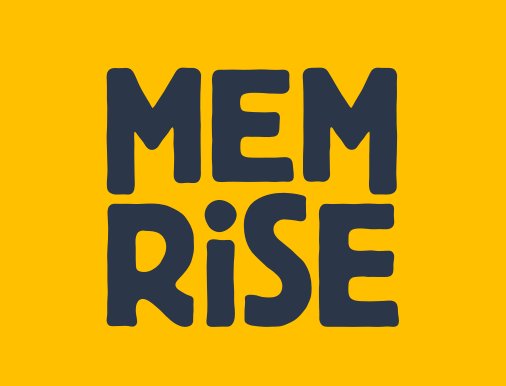
Having just learned the general classifier leh2 in our previous lesson, let's now learn numbers. As we are going to use numbers very often (and in fact you have seen some of them in passing), it is useful to have a good look at them right now.
When we talk of numbers in Penang Hokkien, we can categorize them under cardinal or ordinal numbers, as well as colloquial and literary readings. If you want to approach numbers that way, read the chapter on numbers in my grammar section and I explain all that. But over here, let's keep things simple by looking at the numbers you are most likely to encounter on a daily basis. (As far as possible, I try not to load you with all the grammatical terms unless it's absolutely necessary.)
As usual, always learn the spelling with the tone numbers right from the start.
0: khong3

1: cit1

2: nor33

3: snar1

4: see3

5: gor33

6: lark1

7: chit3

8: peik3

9: kau4

10: cap1

11: cap3-it3

12: cap3-jee33

13: cap3-snar1

14: cap3-see3

15: cap3-gor33

16: cap3-lark1

17: cap3-chit3

18: cap3-peik3

19: cap3-kau4

20: jee33-cap1

21: jee33-cap3-it3

22: jee33-cap3-jee33

23: jee33-cap3-snar1

24: jee33-cap3-see3

25: jee33-cap3-gor33

26: jee33-cap3-lark1

27: jee33-cap3-chit3

28: jee33-cap3-peik3

29: jee33-cap3-kau4

30: snar3-cap1

31: snar3-cap3-it3

32: snar3-cap3-jee33

33: snar3-cap3-snar1

34: snar3-cap3-see3

35: snar3-cap3-gor33

36: snar3-cap3-lark1

37: snar3-cap3-chit3

38: snar3-cap3-peik3

39: snar3-cap3-kau4

40: see1-cap1

41: see1-cap3-it3

42: see1-cap3-jee33

43: see1-cap3-snar1

44: see1-cap3-see3

45: see1-cap3-gor33

46: see1-cap3-lark1

47: see1-cap3-chit3

48: see1-cap3-peik3

49: see1-cap3-kau4

50: gor33-cap1

51: gor33-cap3-it3

52: gor33-cap3-jee33

53: gor33-cap3-snar1

54: gor33-cap3-see3

55: gor33-cap3-gor33

56: gor33-cap3-lark1

57: gor33-cap3-chit3

58: gor33-cap3-peik3

59: gor33-cap3-kau4

60: lark3-cap1

61: lark3-cap3-it3

62: lark3-cap3-jee33

63: lark3-cap3-snar1

64: lark3-cap3-see3

65: lark3-cap3-gor33

66: lark3-cap3-lark1

67: lark3-cap3-chit3

68: lark3-cap3-peik3

69: lark3-cap3-kau4

70: chit1-cap1

71: chit1-cap3-it3

72: chit1-cap3-jee33

73: chit1-cap3-snar1

74: chit1-cap3-see3

75: chit1-cap3-gor33

76: chit1-cap3-lark1

77: chit1-cap3-chit3

78: chit1-cap3-peik3

79: chit1-cap3-kau4

80: peik1-cap1

81: peik1-cap3-it3

82: peik1-cap3-jee33

83: peik1-cap3-snar1

84: peik1-cap3-see3

85: peik1-cap3-gor33

86: peik1-cap3-lark1

87: peik1-cap3-chit3

88: peik1-cap3-peik3

89: peik1-cap3-kau4

90: kau1-cap1

91: kau1-cap3-it3

92: kau1-cap3-jee33

93: kau1-cap3-snar1

94: kau1-cap3-see3

95: kau1-cap3-gor33

96: kau1-cap3-lark1

97: kau1-cap3-chit3

98: kau1-cap3-peik3

99: kau1-cap3-kau4

100: cit3-pak3

101: cit3-pak1-khong1-it3

102: cit3-pak1-khong1-jee33

103: cit3-pak1-khong1-snar1

104: cit3-pak1-khong1-see3

105: cit3-pak1-khong1-gor33

106: cit3-pak1-khong1-lark1

107: cit3-pak1-khong1-chit3

108: cit3-pak1-khong1-peik3

109: cit3-pak1-khong1-kau4

110: cit3-pak1-cap1

111: cit3-pak1-cap3-it3

112: cit3-pak1-cap3-jee33

113: cit3-pak1-cap3-snar1

114: cit3-pak1-cap3-see3

115: cit3-pak1-cap3-gor33

120: cit3-pak1-jee33-cap1

167: cit3-pak1-lark3-cap3-chit4

200: nor33-pak3

205: nor33-pak1-khong1-gor33

209: nor33-pak1-khong1-kau4

211: nor33-pak1-cap3-it3

212: nor33-pak1-cap3-jee33

220: nor33-pak1-jee33-cap1

222: nor33-pak1-jee33-cap3-jee33

300: snar3-pak3

307: snar3-pak1-khong1-chit3

345: snar3-pak1-see1-cap3-gor33

1,000: cit3-cheng1

1,001: cit3-cheng1, khong1-khong1-it3
 (often simply as cit3-cheng1, khong1-it3
(often simply as cit3-cheng1, khong1-it3  )
)1,002: cit3-cheng1, khong1-khong1-jee33

1,010: cit3-cheng1, cap1
 (often simply as cheng3-cap1
(often simply as cheng3-cap1  )
)1,011: cit3-cheng1, cap3-it3

1,020: cit3-cheng1, jee33-cap1

1,055: cit3-cheng1, gor33-cap3-gor33

1,100: cit3-cheng1, cit3-pak3
 (often expressed as cheng3-it3
(often expressed as cheng3-it3  )
)1,110: cit3-cheng1, cit3-pak1-cap1

1,111: cit3-cheng1, cit3-pak1-cap3-it3

1,200: cit3-cheng1, nor33-pak3
 (often expressed as cheng3-jee33
(often expressed as cheng3-jee33  )
)5,473: gor33-cheng1, see1-pak1-chit1-cap3-snar1

10,000: cap3-cheng1
 (also expressed as cit3-ban3
(also expressed as cit3-ban3  )
)11,000: cap3-it1-cheng1

11,001: cap3-it1-cheng1, khong1-khong1-it3

11,100: cap3-it1-cheng1, cit3-pak3
 (often expressed as cap3-it1-cheng3-it3
(often expressed as cap3-it1-cheng3-it3  )
)11,200: cap3-it1-cheng1, nor33-pak3
 (often expressed as cap3-it1-cheng3-jee33
(often expressed as cap3-it1-cheng3-jee33  )
)12,222: cap3-jee33-cheng1, nor33-pak1-jee33-cap3-jee33

50,000: gor33-cap3-cheng1
 (also expressed as gor33-ban3
(also expressed as gor33-ban3  )
)55,055: gor33-cap3-gor33-cheng1, gor33-cap3-gor33

55,500: gor33-cap3-gor33-cheng1, gor33-pak3
 (often expressed as gor33-cap3-gor33-cheng3-gor33
(often expressed as gor33-cap3-gor33-cheng3-gor33  )
)100,000: cit3-pak1-cheng1
 (also expressed as cap3-ban3
(also expressed as cap3-ban3  )
)101,000: cit3-pak1-cit3-cheng1
 (often expressed as pak1-it1-cheng1
(often expressed as pak1-it1-cheng1  )
)110,000: cit3-pak1-cap3-cheng1
 (often expressed as pak1-cap3-cheng1
(often expressed as pak1-cap3-cheng1  and cap3-it1-ban3
and cap3-it1-ban3  )
)500,500: gor33-pak1-cheng1, gor33-pak3

925,400: kau1-pak1-jee33-cap3-gor33-cheng1, see1-pak3

Note how the tone numbers change when you fit them in a string. They behave like other words, in that they sandhi of all the morphemes except the final one. "Cit1" and "nor33" do not appear in two-digit numbers. To express the final digit as "one" or "two", we use "it3" and "jee33". "cit1" reappears as the front digit of hundred, thousand, etc.
Note how the numbers are joined together by hyphen. However, when the numbers are in the thousands, the numbers within the thousands are separated from the hundreds by a comma, the same way you would have written numbers in English and Malay.
When speaking, we often drop the cap1, so instead of saying gor33-cap3-snar1 (53), we simply say gor33-snar1. We also slur the thirties, so that thirty-one often becomes sam3-it3 rather than the full snar3-cap3-it3.
One million is pak1-ban3, however it has falling out of use (except perhaps to scold people). When I speak with property agents (Penang property prices are often in the million), the term they use for million is "million" itself. When they want to say that this house costs one million, I hear them use "cit3 million". So I would recommend following the flow than to stay within pure Hokkien.
To get used to numbers, it is useful to read through them a few times, then cover the list with a piece of paper, and see if you can still read them correctly.
One thing to learn for this lesson is sufficient. We will look at how we use the numbers we lesoon in this lesson, to incorporate them with the classifiers in our next lesson.
Previous Lesson | Main Page | Next Lesson
Language Learning Tools
Use the following language learning tools to learn Penang Hokkien!Learn Penang Hokkien with uTalk
This app opens the door to over 150 languages.Return to Penang Hokkien Resources

Copyright © 2003-2025 Timothy Tye. All Rights Reserved.

 Go Back
Go Back
